Key Takeaways
Discover the best tools and platforms to build engaging community showcases. Learn how digital recognition solutions help schools, nonprofits, and organizations celebrate achievements and strengthen connections.
Understanding Community Showcase Tools
Community showcase tools encompass the platforms, software, and systems organizations use to publicly recognize, celebrate, and share community achievements, contributions, and stories. These tools range from sophisticated digital displays to web-based platforms, each serving the fundamental purpose of making community excellence visible and accessible.
The Evolution of Community Recognition
Traditional community recognition relied on physical displays with inherent limitations including limited space constraining how many people could be honored, high ongoing costs for producing new plaques or displays, inflexibility making updates difficult and time-consuming, static presentation offering minimal engagement, and inaccessibility to remote community members unable to visit physical locations.
Digital showcase tools address these limitations while creating new opportunities for engagement that traditional methods cannot match. Modern platforms enable unlimited recognition capacity, instant content updates, rich multimedia storytelling, interactive exploration, web accessibility from anywhere, and measurable analytics demonstrating impact.
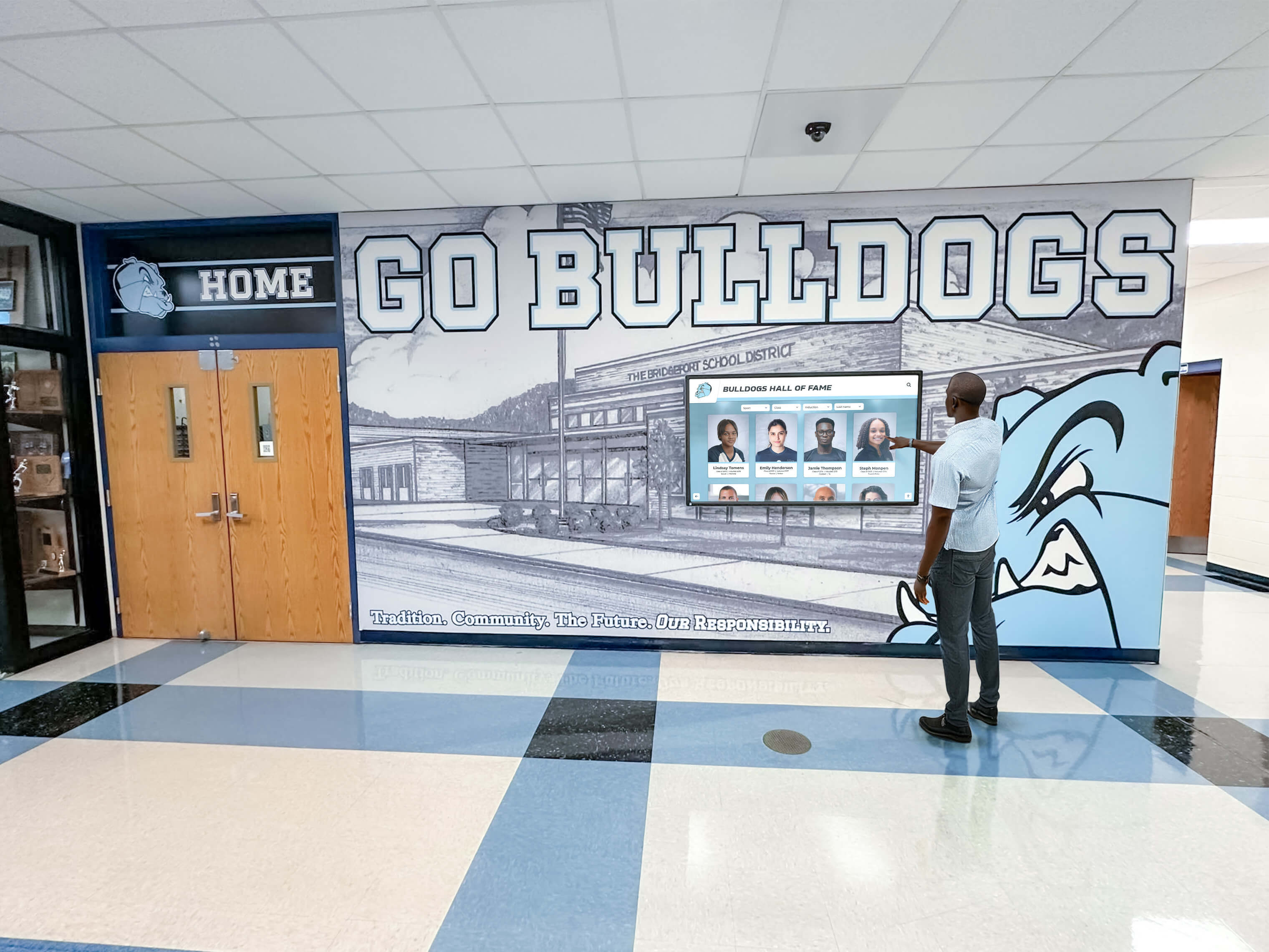
Why Organizations Need Better Showcase Tools
The shift toward digital community showcase solutions stems from fundamental changes in how communities function and communicate. Today’s organizations face several challenges that modern showcase tools address including geographically dispersed community members requiring remote access, increasing volunteer and donor retention challenges, competition for community attention and engagement, need for transparent impact demonstration, desire for inclusive recognition honoring diverse contributions, and demand for cost-effective scalable solutions.
Organizations implementing comprehensive showcase tools commonly report 30-45% improvements in community engagement metrics, increased volunteer retention, enhanced donor satisfaction, and stronger overall community identity and pride.
Types of Community Showcase Tools
Effective community recognition typically involves multiple tools working together to create comprehensive showcase ecosystems. Understanding available tool categories helps organizations select solutions matching their specific needs and goals.
Interactive Touchscreen Display Systems
Interactive touchscreen displays represent the most advanced physical recognition solution, combining impressive visual presence with engaging interactive capabilities. These systems installed in high-traffic facility locations provide 24/7 community recognition while inviting exploration and discovery.
Key Features of Touchscreen Showcase Systems:
- Commercial-grade displays designed for continuous operation
- Intuitive touch interfaces enabling easy navigation and exploration
- Multimedia content support including photos, videos, and detailed profiles
- Search and filter capabilities helping visitors find specific individuals
- Customizable designs matching organizational branding
- Cloud-based content management enabling remote updates
- Analytics tracking engagement patterns and popular content
- Both portrait and landscape orientation options
Solutions like Rocket Alumni Solutions provide purpose-built platforms specifically designed for community recognition. These systems combine sophisticated touchscreen hardware with intuitive content management software, enabling organizations to create professional recognition experiences without requiring technical expertise.
Touchscreen displays work particularly well for schools celebrating student achievement, nonprofits honoring volunteer contributions, and communities recognizing local partnerships and sponsors.
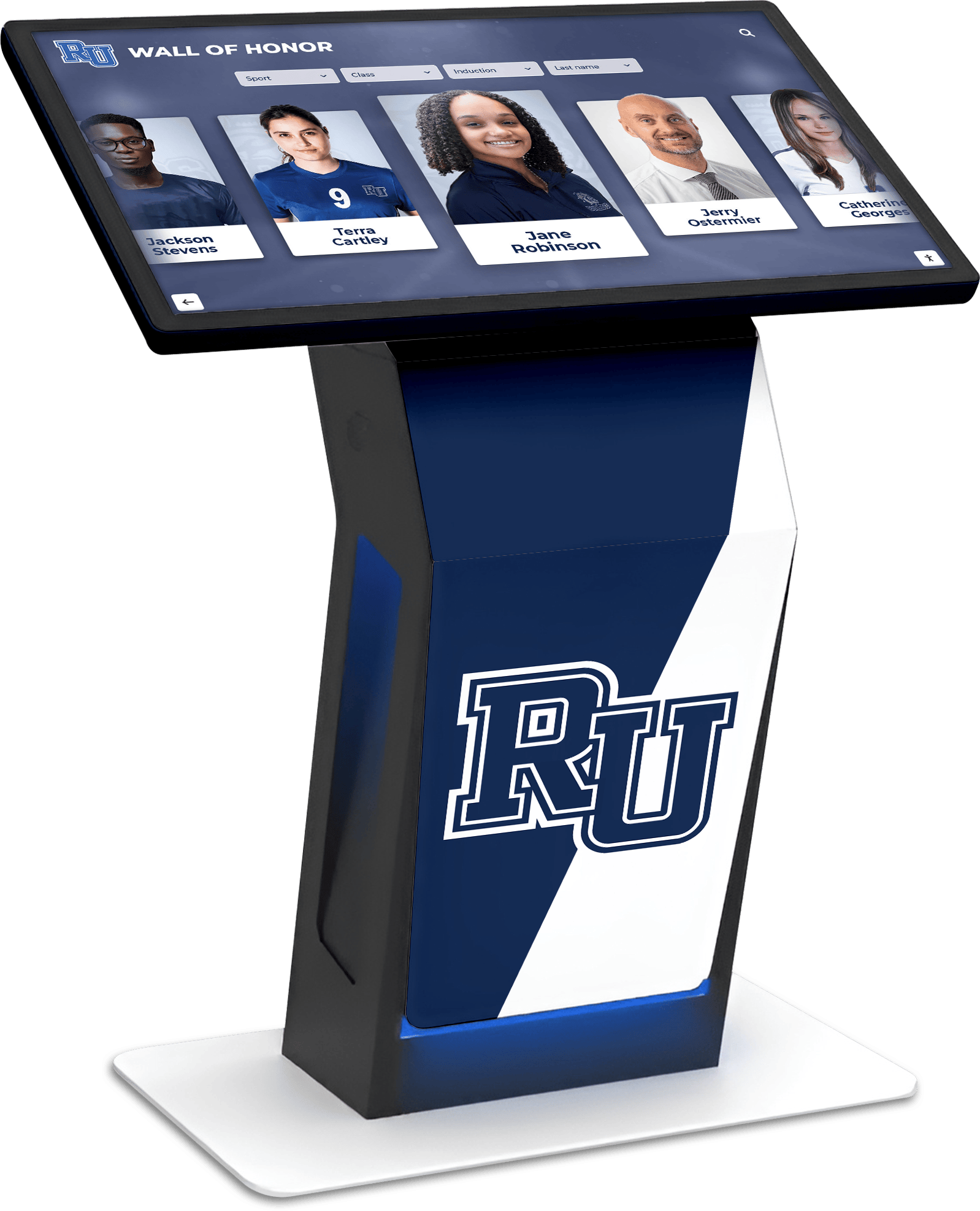
Web-Based Recognition Platforms
Web-based showcase platforms extend community recognition beyond physical locations, providing accessible recognition experiences for remote community members, alumni, and distant supporters. These platforms work independently or as companions to physical displays, ensuring comprehensive community reach.
Essential Web Platform Capabilities:
- Responsive design working seamlessly across desktops, tablets, and smartphones
- Unlimited profile capacity accommodating growing community recognition
- Rich media galleries showcasing photos, videos, and documents
- Search functionality enabling visitors to find specific individuals or achievements
- Social sharing features amplifying recognition reach beyond your community
- SEO optimization ensuring recognition appears in search results
- Customizable templates maintaining consistent branding
- Analytics dashboards tracking visitor engagement and content popularity
Web platforms prove particularly valuable for organizations with geographically distributed communities, enabling remote access that physical displays cannot provide. Schools can connect with distant alumni, nonprofits can engage supporters across regions, and community organizations can maintain bonds with relocated members.
Content Management Systems
Behind every effective showcase—whether physical or digital—lies robust content management enabling efficient recognition program administration. Modern content management systems provide the organizational backbone for sustainable showcase programs.
Critical CMS Features for Community Showcases:
- Intuitive interfaces requiring no technical training or coding knowledge
- Role-based permissions enabling multiple administrators with appropriate access
- Bulk upload capabilities streamlining addition of historical recognition
- Template systems ensuring consistent professional presentation
- Approval workflows maintaining quality control for published content
- Scheduled publishing automating recognition announcements
- Revision history and backups protecting content from accidental loss
- Media libraries centralizing photos, videos, and documents
Organizations should prioritize content management systems designed specifically for recognition rather than adapting generic website builders. Purpose-built platforms understand recognition program needs and workflows, providing features generic tools lack while eliminating unnecessary complexity.
Integration and Automation Tools
Comprehensive showcase solutions integrate with existing organizational systems, automating workflows and ensuring recognition data remains synchronized across platforms without manual duplication.
Key Integration Capabilities:
- Donor management system connections for automatic recognition
- Volunteer tracking software integration for hour verification
- Student information system links for academic achievement recognition
- Event management platform connections for celebration coordination
- Email marketing integration for automated recognition announcements
- Social media connectivity for extended recognition reach
- Calendar integration for anniversary and milestone recognition
These integrations reduce administrative burden while ensuring recognition programs remain current and comprehensive without requiring constant manual updates.
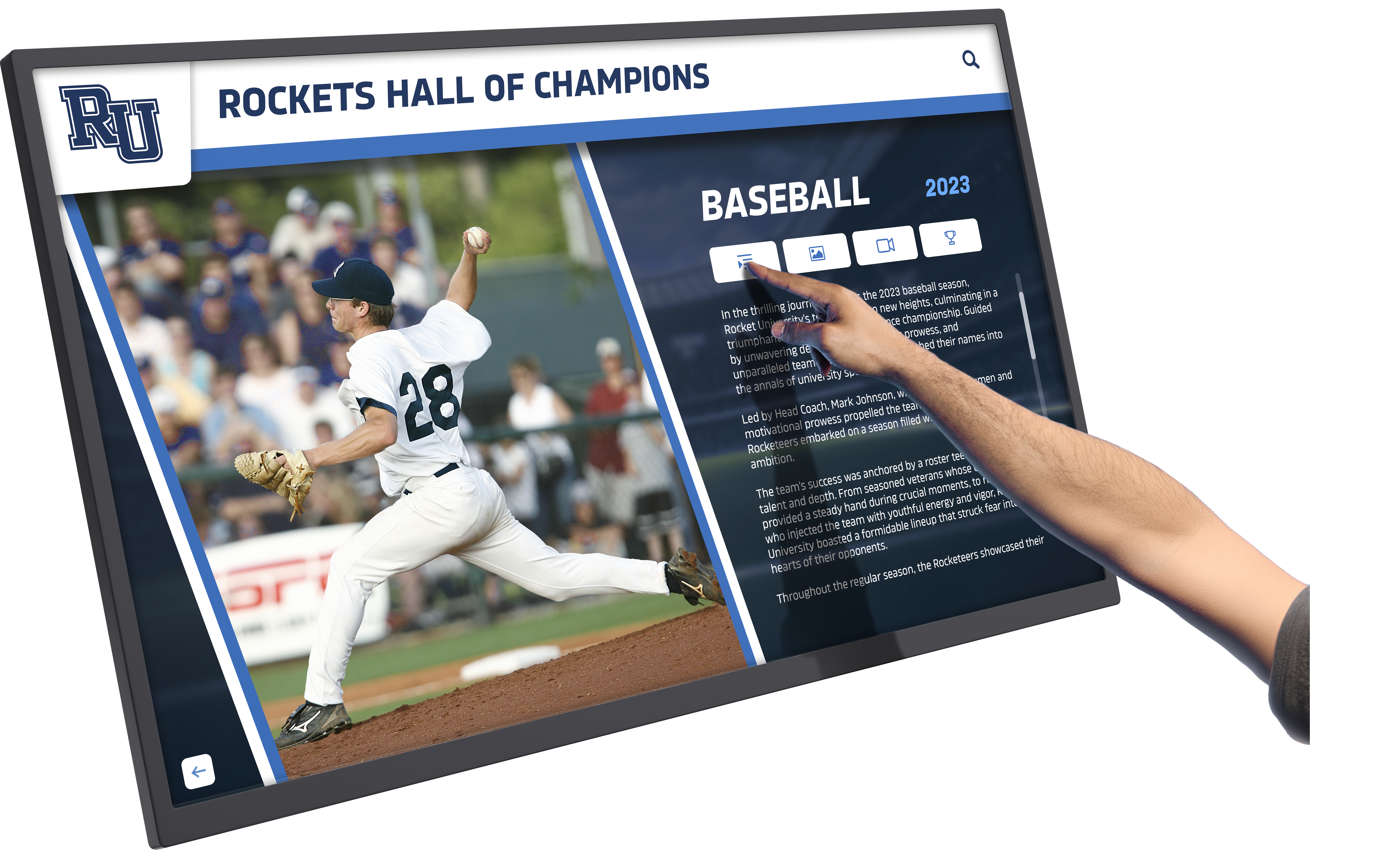
Essential Features to Look For
When evaluating community showcase tools, certain features separate truly effective platforms from basic solutions that quickly become limiting or frustrating.
Unlimited Recognition Capacity
Your community will grow, and your showcase should accommodate this growth without artificial limits or expensive capacity upgrades. Look for platforms offering unlimited profiles without per-person fees, unlimited photo and video storage within reasonable quality guidelines, unlimited administrator accounts for distributed management, and unlimited categories for diverse achievement types.
Space constraints of traditional physical displays force difficult decisions about which community members receive recognition. Digital platforms eliminate these limitations, ensuring every deserving individual can be honored appropriately regardless of community size.
User-Friendly Content Management
The easiest platform to use consistently gets used, while complex systems often fall into neglect when initial enthusiasm fades. Prioritize solutions offering drag-and-drop interfaces for media uploads, WYSIWYG editors showing exactly how content will appear, one-click publishing without technical deployment processes, mobile content management enabling updates from smartphones, and comprehensive yet comprehensible help documentation.
Staff turnover affects every organization. Systems requiring extensive training create continuity challenges when key personnel leave. Intuitive platforms maintain consistency because new administrators can quickly learn essential functions without lengthy onboarding.
Comprehensive Multimedia Support
Static text and single photos no longer suffice for meaningful recognition. Communities want rich storytelling that brings achievements to life through multiple media formats including high-resolution photo galleries showcasing multiple images per profile, embedded video support for interviews and performance recordings, audio integration for speeches or musical performances, document attachments for certificates or additional context, and interactive timelines showing contribution progression over time.
Multimedia capabilities enable organizations to tell complete stories rather than reducing complex achievements to brief text descriptions. This depth creates emotional connections that simple listings cannot generate.
Mobile-Responsive Design
With over 60% of web traffic coming from mobile devices, showcase platforms must provide excellent mobile experiences. Essential mobile capabilities include responsive layouts adapting to various screen sizes, touch-optimized navigation designed for fingers not cursors, fast loading on cellular connections, and simplified mobile interfaces prioritizing essential content.
Mobile accessibility extends community reach dramatically. Distant supporters can explore recognition during daily mobile browsing, parents can show achievements to extended family on smartphones, and alumni can reminisce about their experiences from anywhere using devices always at hand.
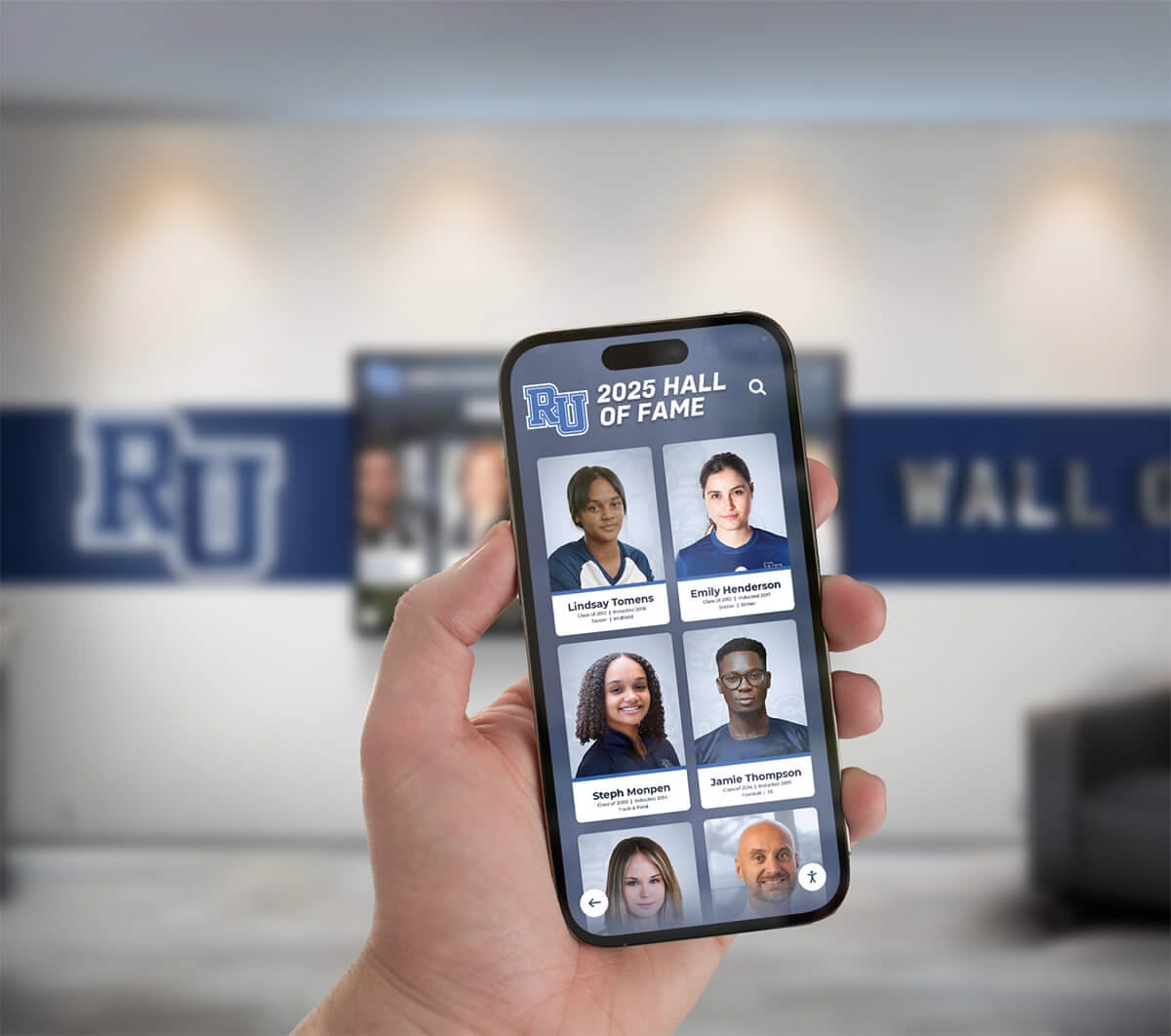
Powerful Search and Discoverability
As recognition databases grow, search functionality becomes essential for helping visitors find specific individuals or browse relevant content. Effective search includes full-text search across names, achievements, and descriptions, advanced filtering by category, year, or achievement type, alphabetical browsing for systematic exploration, related content suggestions encouraging discovery, and tag systems connecting similar achievements or individuals.
Search transforms large recognition databases from overwhelming catalogs to navigable resources where visitors easily find connections and discover unexpected achievements.
Analytics and Engagement Tracking
Understanding how communities engage with recognition helps organizations optimize programs and demonstrate value to stakeholders. Valuable analytics include visitor statistics showing traffic patterns and growth, content popularity revealing which profiles attract attention, search queries indicating what visitors seek, engagement duration demonstrating content quality, geographic distribution showing community reach, and device breakdowns informing optimization priorities.
These insights enable data-driven improvements ensuring showcase tools deliver maximum community value while helping organizations justify continued investment in recognition programs.
Leading Community Showcase Platforms and Solutions
The community showcase tool landscape includes various platforms, each with particular strengths for different organizational needs and contexts.
Comprehensive Recognition Solutions
Purpose-built recognition platforms designed specifically for community showcase provide the most integrated, user-friendly experiences for organizations prioritizing community recognition.
Rocket Alumni Solutions offers comprehensive touchscreen and web-based recognition specifically designed for schools, nonprofits, and community organizations. Key advantages include combined physical touchscreen and web recognition, intuitive content management requiring no technical skills, unlimited recognition capacity without per-person fees, professional design templates with customization, cloud hosting and automatic backups, ongoing support and training, and proven track record with 1,000+ installations nationwide.
This platform works particularly well for organizations wanting turnkey solutions that work immediately without extensive configuration or technical implementation. The combination of physical displays creating impressive on-site presence with web accessibility reaching remote communities provides comprehensive recognition coverage.
Community Platform Builders
General community platforms offer broader community building features beyond just recognition, including discussion forums, event management, member directories, and collaboration tools alongside recognition capabilities.
These platforms work well for organizations wanting all-in-one community management rather than dedicated recognition solutions. However, recognition often receives less development focus compared to specialized platforms, potentially limiting advanced showcase features.
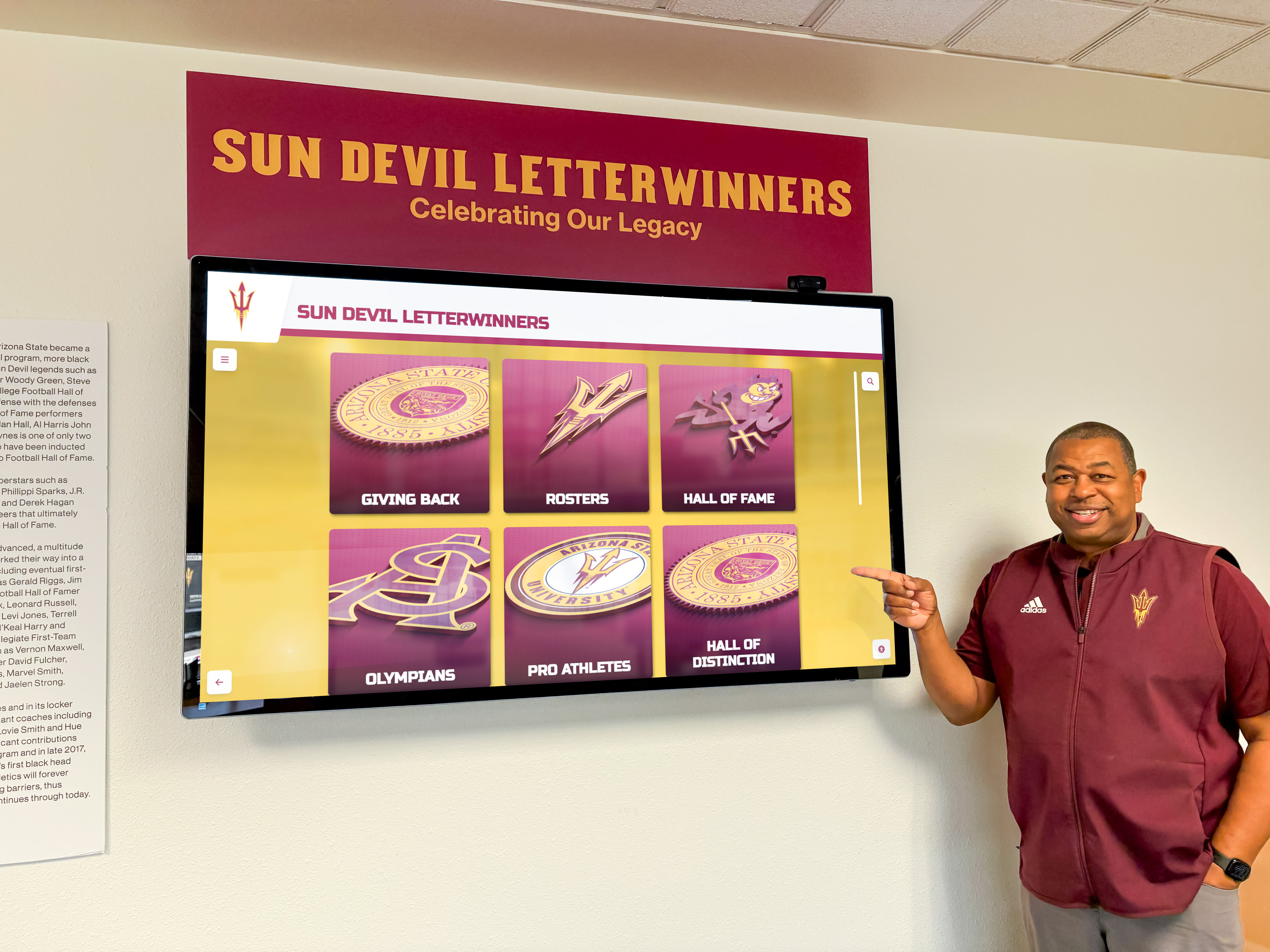
Digital Signage Systems
Generic digital signage platforms can display recognition content but lack features specifically designed for community showcase applications. While lower cost entry points may seem attractive, organizations often find limitations frustrating including lack of recognition-specific templates, limited interactivity compared to dedicated solutions, no built-in search or filter capabilities, generic designs not optimized for community recognition, and limited analytics about recognition engagement.
Digital signage works adequately for simple rotating photo displays but cannot support comprehensive interactive recognition programs that truly engage communities.
Custom Development
Some organizations consider custom-developed showcase solutions built specifically for their unique requirements. Custom development provides ultimate flexibility and unique features but brings significant challenges including substantial upfront development costs, ongoing maintenance requirements, longer implementation timelines, technical dependency on original developers, and potential abandonment if key developers leave.
Custom solutions make sense for very large organizations with specific requirements that existing platforms cannot meet and budgets supporting both development and ongoing maintenance. Most organizations find purpose-built recognition platforms like Rocket Alumni Solutions provide necessary customization within proven frameworks, avoiding custom development risks while delivering professional results.
Implementing Community Showcase Tools
Successful showcase implementation requires systematic approaches addressing technology selection, content development, and ongoing program management.
Assessment and Planning Phase
Begin by evaluating your organization’s specific community showcase needs and available resources through current recognition method inventory, stakeholder input gathering, budget constraint understanding, technical capability assessment, and community size and growth projection.
This assessment informs realistic implementation planning including platform selection matching needs and budget, content development scope and timeline, staff training and responsibility assignment, launch strategy and promotion planning, and long-term sustainability measures.
Platform Selection Process
Choosing appropriate showcase tools involves evaluating options against your specific requirements using decision criteria including feature alignment with identified needs, ease of use for your staff capabilities, scalability accommodating community growth, cost fitting budget both initially and ongoing, vendor reputation and track record, support quality and availability, and integration with existing systems.
Request demonstrations from multiple vendors, involve stakeholders in evaluation, and insist on trial periods testing platforms before committing to long-term contracts. The right platform feels intuitive and addresses your recognition challenges without requiring excessive configuration or customization.
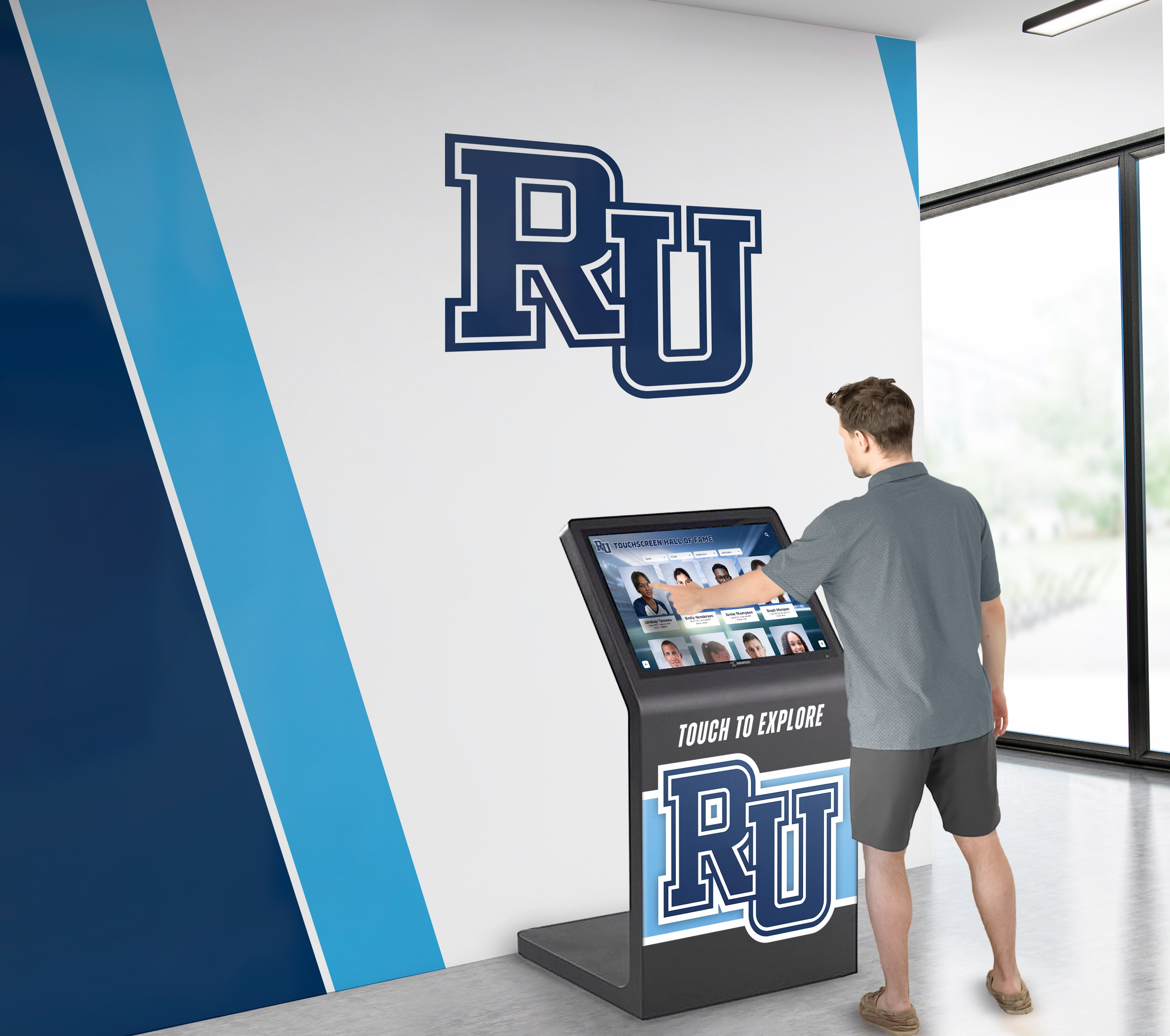
Content Development Strategy
Quality showcase content requires systematic development approaches including historical achievement identification and documentation, photo and video collection from multiple sources, achievement description writing in consistent formats, category definition and organizational structure, and quality control procedures ensuring accuracy.
Many organizations find content development the most time-intensive implementation phase. Strategies for manageable development include starting with recent recognition and working backward chronologically, soliciting content contributions from recognized individuals, involving volunteers or students in digitization projects, accepting initial imperfection with plans for ongoing enhancement, and using template systems for consistent efficient content creation.
Launch and Promotion
Strategic showcase launches maximize visibility and adoption through soft launch testing with limited audiences, feedback collection and refinement, official unveiling creating excitement, promotion across multiple communication channels, and documentation celebrating new recognition capabilities.
Launch promotion should emphasize how showcase tools benefit community members rather than focusing solely on technical features. Highlight accessibility, searchability, and the comprehensive nature of recognition rather than implementation details.
Ongoing Program Management
Sustainable showcase programs require ongoing attention including regular content additions for new recognition, periodic content audits maintaining accuracy, engagement analytics review informing improvements, community feedback solicitation and responsiveness, and technical maintenance ensuring reliable operation.
Assign clear responsibility for showcase management to specific individuals rather than assuming “someone will handle it.” Programs with designated coordinators remain current and engaging while those without clear ownership often become neglected.
Best Practices for Effective Community Showcases
Organizations with successful long-term recognition programs share common approaches that maximize showcase impact and sustainability.
Comprehensive and Inclusive Recognition
The most effective showcases honor diverse contributions across multiple categories rather than focusing narrowly on traditional high-profile achievements. Ensure your showcase recognizes volunteer service across all roles not just leadership positions, arts and creative achievements alongside athletic and academic honors, community improvement contributions regardless of scale, character and citizenship demonstrations, overcoming obstacles and personal growth, and behind-the-scenes contributions that often go unnoticed.
This comprehensive approach ensures all community members see themselves reflected in recognition, creating inclusive environments where everyone feels valued and appreciated.
Rich Multimedia Storytelling
Transform recognition from simple listings to compelling narratives through professional-quality photography showcasing individuals appropriately, video interviews sharing personal stories and reflections, achievement context explaining significance and impact, contribution timelines showing progression over time, and connections between related achievements or individuals.
Storytelling creates emotional connections that simple facts cannot generate. When communities understand not just what someone achieved but why it matters and how it happened, recognition becomes meaningful rather than perfunctory.
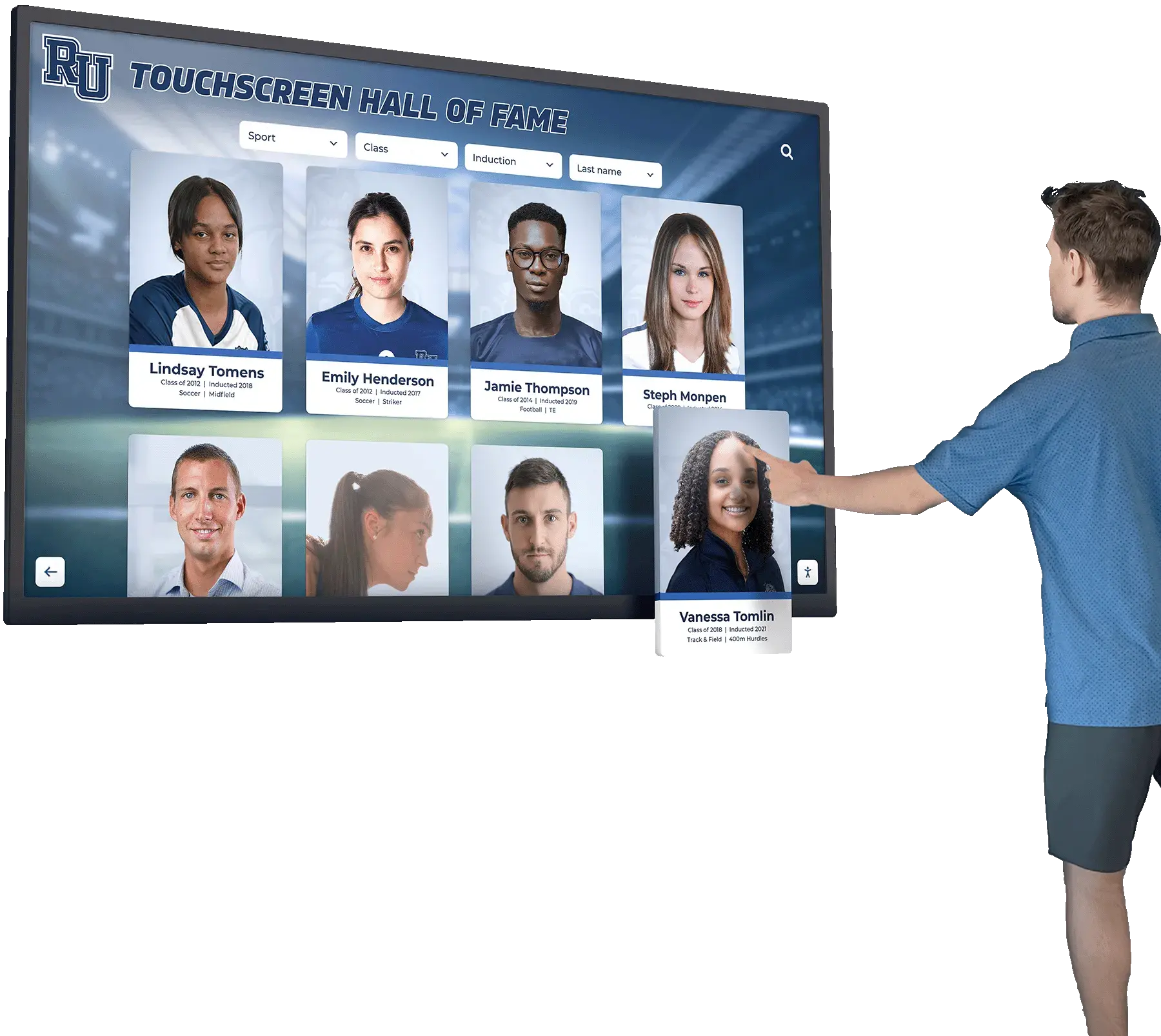
Regular Content Updates
Showcases remain engaging through consistent additions and updates rather than becoming historical archives that never change. Establish rhythms for prompt recognition of new achievements within days or weeks, seasonal content featuring relevant accomplishments, anniversary recognition celebrating milestone years, and periodic content enhancements improving existing profiles.
Communities notice whether showcases feel current and active versus abandoned and outdated. Regular updates signal ongoing organizational commitment to recognition, encouraging continued community engagement and participation.
Integration With Broader Community Building
Don’t isolate showcase tools from other community building initiatives. Instead, integrate recognition with community events highlighting showcase content, social media campaigns driving traffic to recognition profiles, newsletter features spotlighting recognized individuals, fundraising initiatives connecting recognition to support, and volunteer recruitment demonstrating appreciation for service.
Recognition becomes most powerful when woven throughout organizational culture rather than confined to isolated showcase platforms. Integration ensures recognition shapes community identity and values rather than existing as separate acknowledgment system.
Data-Driven Continuous Improvement
Use analytics and feedback to continuously enhance showcase effectiveness through engagement pattern analysis informing content strategy, popular content study revealing what resonates with communities, search query review showing what visitors seek, community feedback solicitation gathering improvement suggestions, and comparative analysis tracking improvements over time.
Organizations treating showcases as evolving platforms requiring ongoing refinement create increasingly effective recognition over time, while those implementing once and never revisiting miss opportunities for optimization and improvement.
Measuring Community Showcase Success
Effective measurement demonstrates showcase value while identifying opportunities for enhancement.
Engagement Metrics
Track quantitative indicators of community interaction including total visitors and visit trends over time, unique visitors versus returning visitors, average time spent exploring content, pages or profiles viewed per visit, search queries and filter usage, and social sharing frequency and reach.
Growing engagement over time indicates successful showcase implementation, while stagnant or declining metrics suggest need for content refreshment or promotional enhancement.
Community Impact Indicators
Beyond usage statistics, assess broader community effects including volunteer recruitment and retention rates, donor satisfaction and giving patterns, community member survey responses about recognition, community pride and identity indicators, program participation rates, and anecdotal feedback and testimonials.
These qualitative measures reveal whether showcase tools genuinely strengthen community bonds and inspire participation beyond simply providing information display.
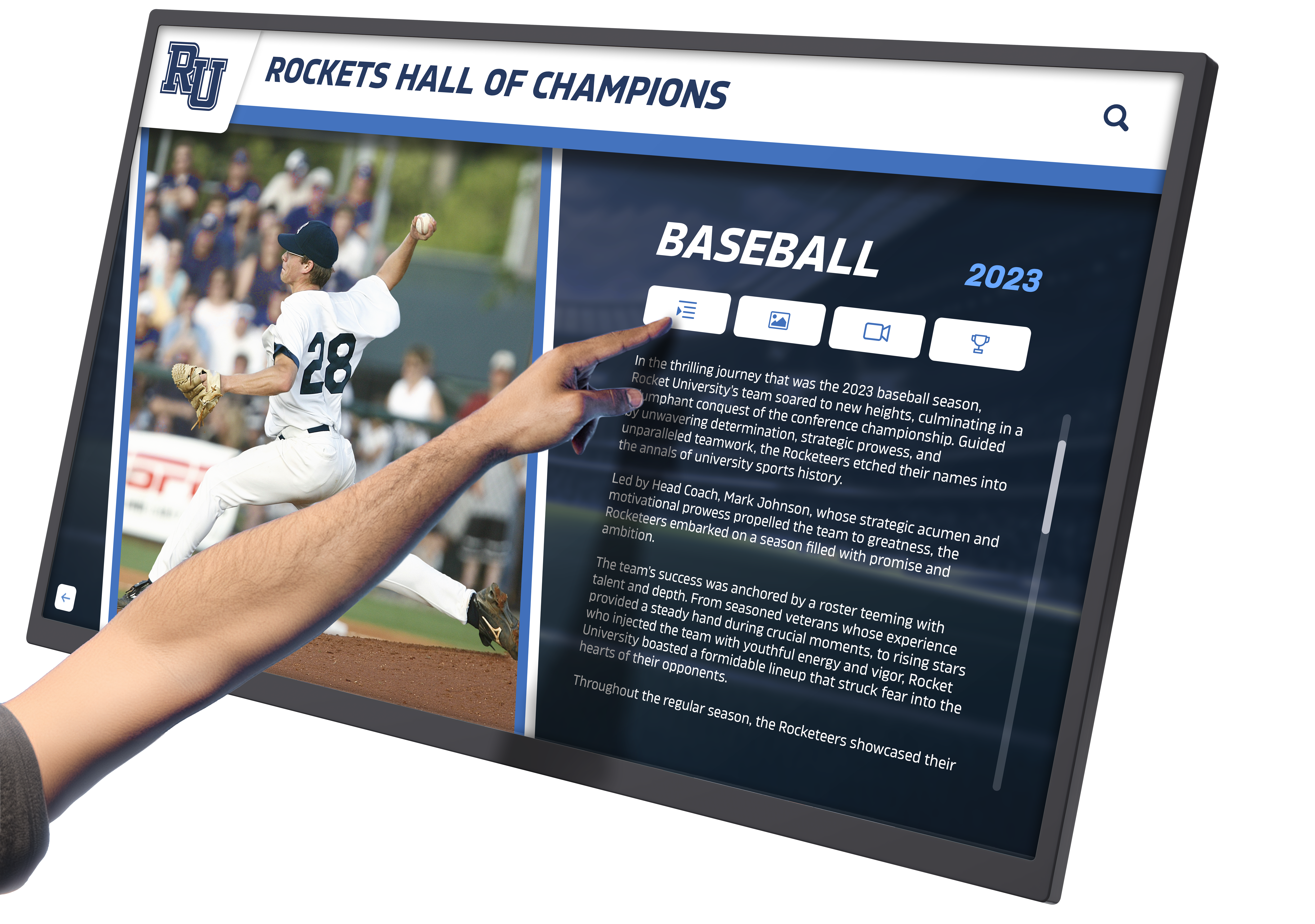
Return on Investment
Demonstrate financial value through reduced recognition material costs compared to traditional methods, staff time savings from efficient content management, increased retention reducing recruitment costs, enhanced giving attributable to recognition, and avoided costs from reputation and community building.
While community impact provides primary justification for showcase investment, quantifiable ROI helps secure continued funding and support from budget-conscious stakeholders.
Future Trends in Community Showcase Tools
Community showcase technology continues evolving with emerging capabilities shaping next-generation recognition experiences.
Artificial Intelligence Integration
AI capabilities increasingly enhance showcase platforms through automated content generation from structured data, intelligent search understanding natural language queries, personalized recommendations suggesting relevant content, predictive analytics identifying recognition opportunities, and image enhancement improving photo quality.
These AI features reduce administrative burden while creating more engaging personalized experiences for community members exploring recognition content.
Virtual and Augmented Reality
Emerging immersive technologies enable new recognition experiences including virtual reality tours of recognition spaces, augmented reality overlays adding digital content to physical spaces, 3D recognition displays viewable from multiple angles, and virtual ceremony participation for remote community members.
While still emerging, these technologies offer exciting possibilities for creating memorable recognition experiences that transcend current platform capabilities.
Enhanced Interactivity and Personalization
Next-generation platforms increasingly enable personalized experiences adapting to viewer interests and connections, interactive timeline exploration showing achievement progression, community contribution tracking gamifying recognition participation, direct messaging enabling connections between recognized individuals, and collaborative content creation allowing community contributions to profiles.
These interactive features transform showcases from passive displays to active community platforms fostering ongoing engagement and connection.
Conclusion: Building Stronger Communities Through Better Tools
The tools you choose for showcasing community achievements profoundly impact your organization’s ability to strengthen bonds, inspire participation, and celebrate the contributions that make communities thrive. Modern digital recognition platforms have eliminated the constraints of traditional static displays, enabling organizations to honor unlimited community members through rich multimedia storytelling accessible anywhere.
Whether you’re beginning your community showcase journey or enhancing existing recognition programs, prioritize tools offering user-friendly content management, unlimited recognition capacity, comprehensive multimedia support, and proven track records helping organizations like yours succeed. The right platform feels intuitive, addresses your recognition challenges without excessive complexity, and grows alongside your community.
Organizations implementing comprehensive showcase solutions commonly report dramatic improvements in community engagement, volunteer retention, donor satisfaction, and overall community pride. These outcomes stem not from technology itself but from the visibility, accessibility, and meaning that effective tools bring to community recognition.
Start by assessing your current recognition approaches and identifying limitations holding back your community celebration. Evaluate platforms specifically designed for recognition rather than adapting generic solutions. Involve community members in planning and feedback. Most importantly, commit to ongoing program management ensuring your showcase remains current, engaging, and meaningful over time.
The investment in quality community showcase tools pays dividends through stronger relationships, increased participation, and the thriving community culture that effective recognition helps create.
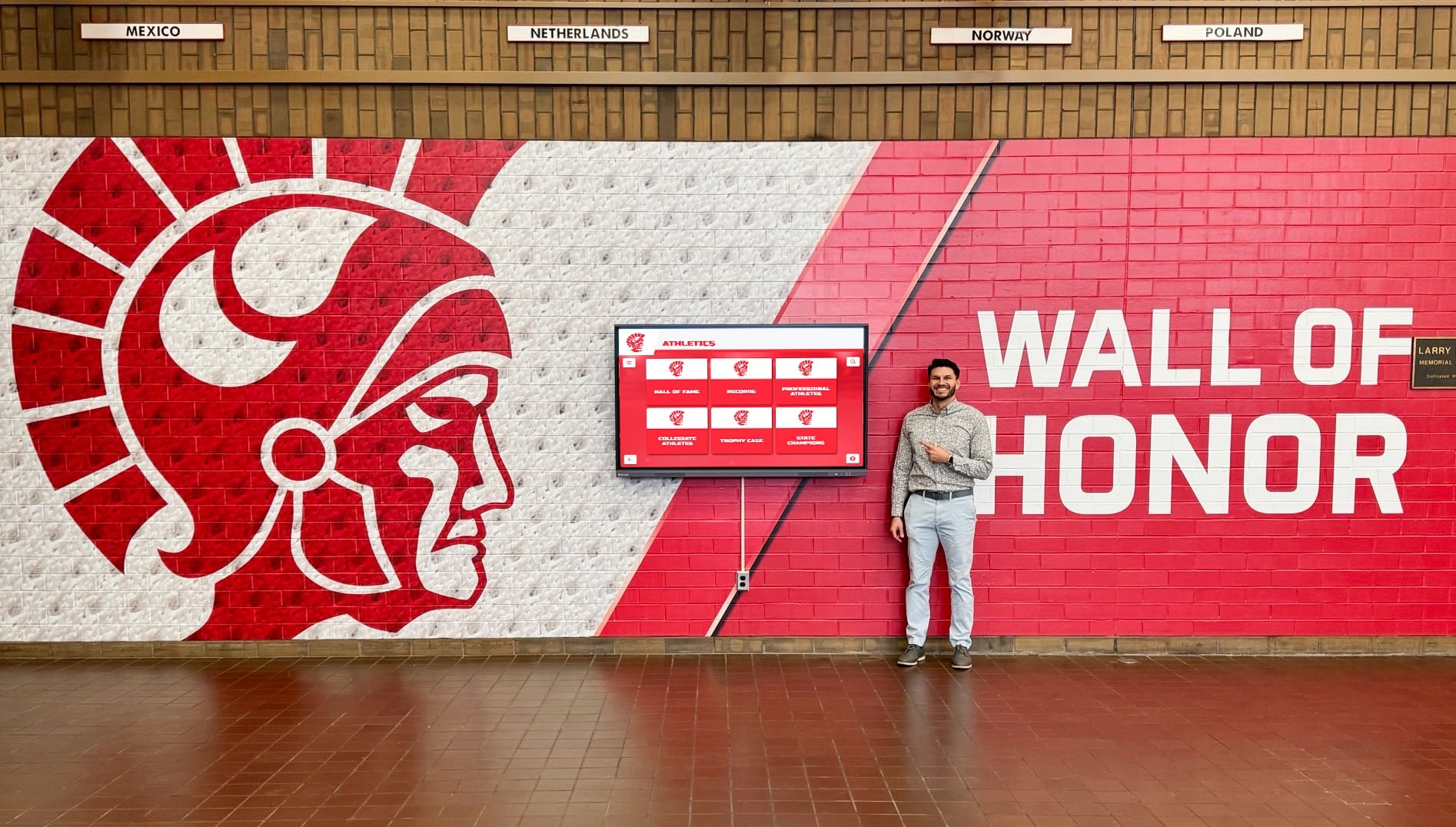
Ready to Transform Your Community Recognition?
Discover how Rocket Alumni Solutions provides comprehensive showcase tools combining interactive touchscreen displays with web-accessible platforms, intuitive content management requiring no technical expertise, and proven success across 1,000+ installations. Create community recognition experiences that truly engage, inspire, and strengthen your community bonds.
Contact us today to explore how modern showcase tools can help your organization celebrate community excellence while building the lasting connections that define thriving communities.





































